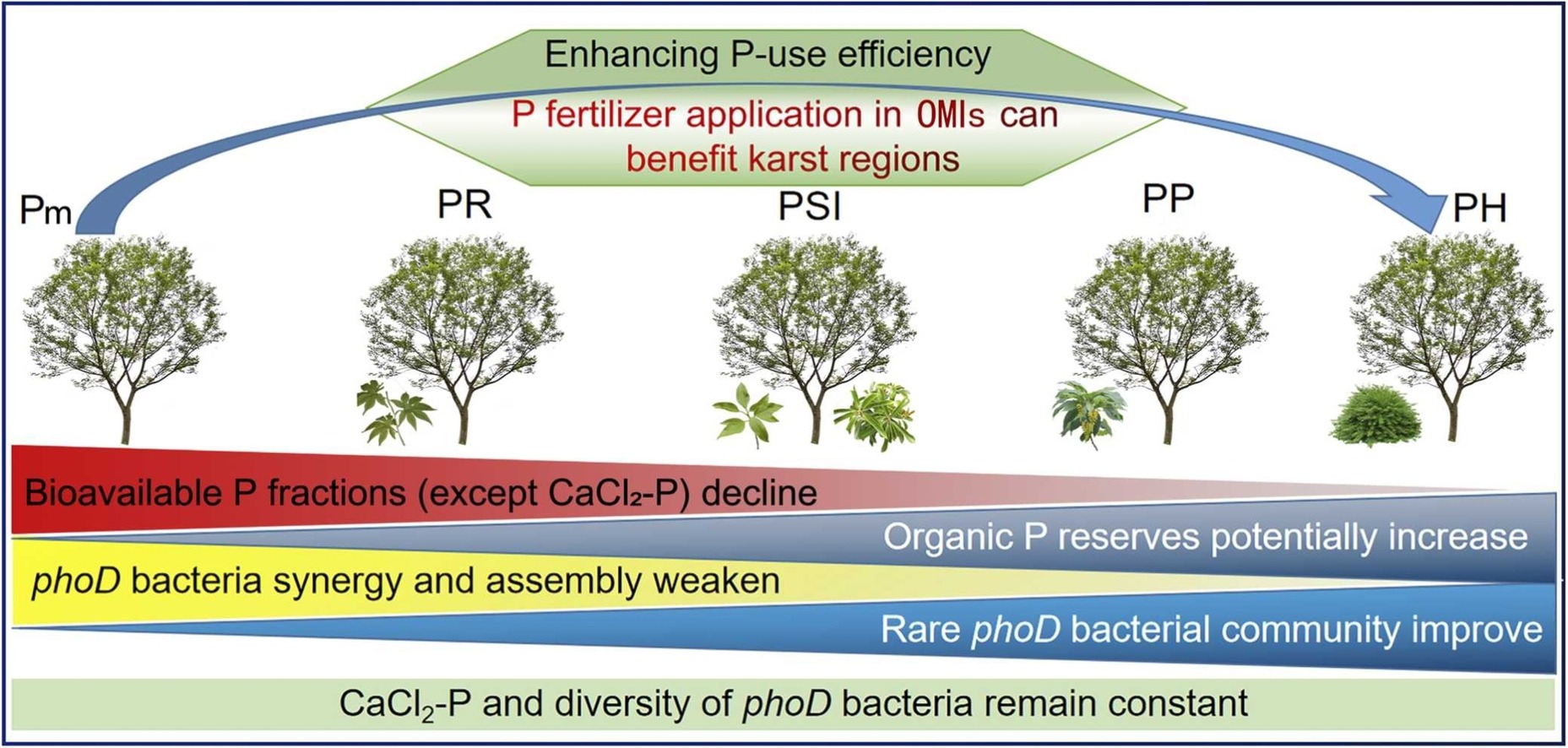Intercropping medicinal plants between fruit trees has become a promising approach to enhance soil nutrient content, optimize under-canopy space utilization, and increase farmers’ income. In phosphorus-deficient karst regions, improving phosphorus bioavailability through natural means is crucial for both ecological restoration and sustainable agricultural productivity.
In a study published in Agriculture,Ecosystems and Environment, researchers from Xishuangbanna Tropical Botanical Garden (XTBG) of the Chinese Academy of Sciences revealed how intercropping medicinal plants within fruit tree orchards can modify soil microbial communities to improve sustainable phosphorus utilization.
The researchers investigated the effects of different medicinal plants on soil phosphorus (P) bioavailability in an orchard–medicinal intercropping system (OMIs) located in the karst terrain of the Lijiang River Basin in Southwest China.
By comparing monoculture orchards with four intercropping setups, they discovered that rare bacteria carrying the phosphorus-mobilizing (phoD) gene—not the abundant ones—are the main drivers of soil phosphorus bioavailability. These rare microbes exhibited high sensitivity to variations in soil nitrogen-to-phosphorus (N:P) ratio, pH, and moisture content.
Although intercropping generally reduced immediately available phosphorus fractions, it increased Microbial Biomass Phosphorus (MBP). This indicated a transition from readily accessible inorganic phosphorus (Pi) toward a more substantial, temporary pool of organic phosphorus (Po), which could enhance long-term phosphorus-use efficiency.
Two intercropping systems—Prunus salicina with Hypericum monogynum (PH) and Prunus salicina with Polygala fallax (PP)— proved most effective in enriching the organic phosphorus reserve and improving phosphorus-use efficiency.
While the diversity of phoD-harboring bacteria remained consistent across systems, intercropping significantly altered their composition and community structure. Key bacterial taxa—including the abundant Bradyrhizobium and the rare Pseudomonas—were identified as crucial contributors to phosphorus availability.
“Our study underscores the importance of selecting appropriate medicinal plant species for intercropping to optimize below-ground ecological functions. Systems such as PH and PP show strong potential in fostering rare microbial communities that improve phosphorus cycling,” said LIU Chenggang of XTBG.

Rare microbes, not common ones, drive phosphorus bioavailability in karst farming systems. (Image by LIU Chenggang)
Available one: 25 July 2025

